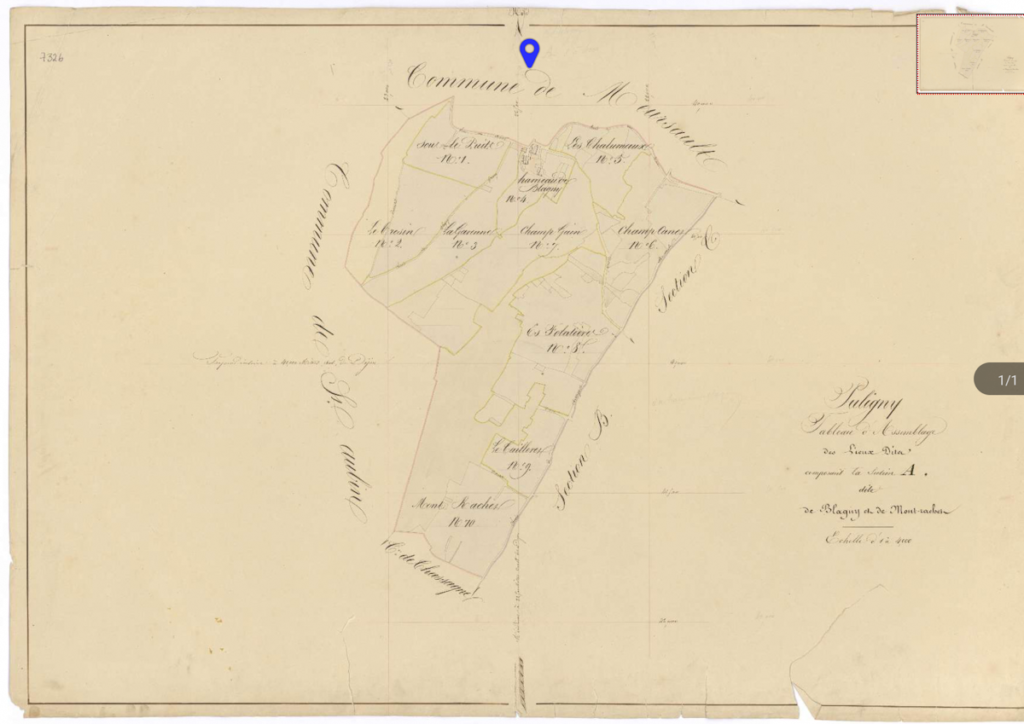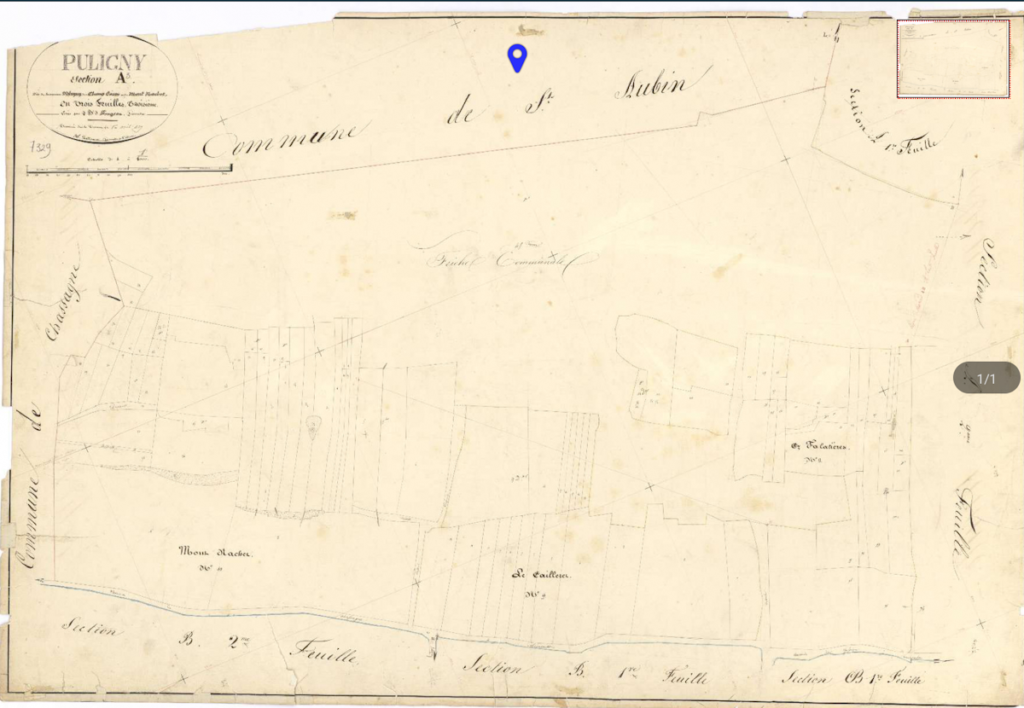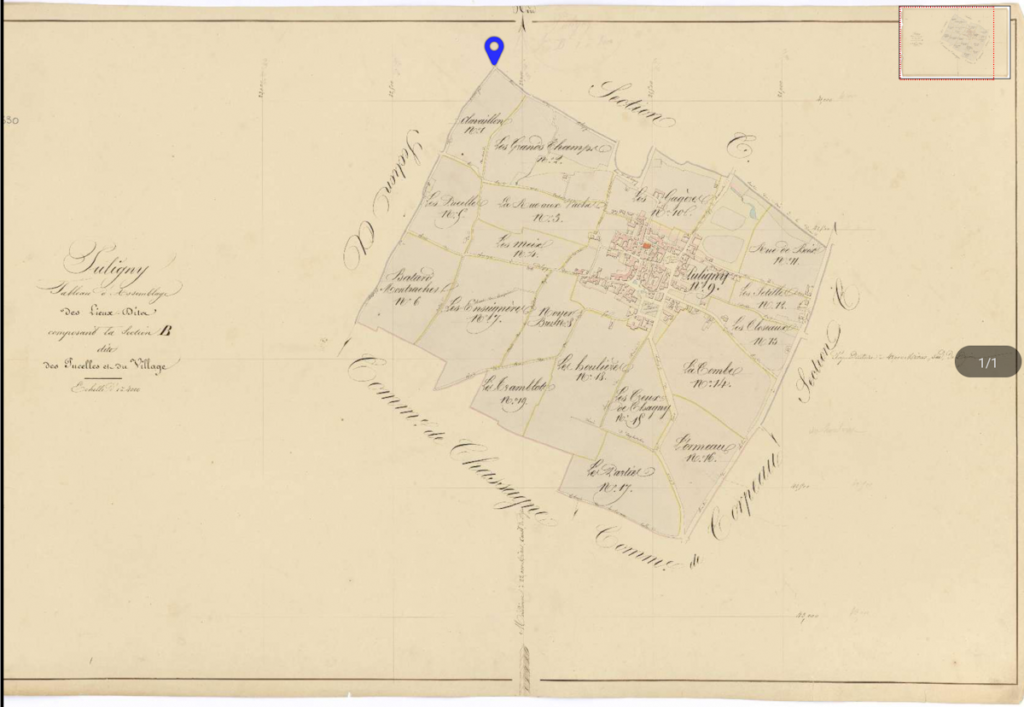While Burgundy is a very old, historic area, not all is what it seems regarding its wines and appellations.
The Montrachet area – with Montrachet, Chevalier-Montrachet, Bâtard-Montrachet, and the more recent Bienvenues-Bâtard-Montrachet and Criots-Bâtard-Montrachet – was actually formalized in the period 1920-1939 when the appellations were all settled and fixed.
That is quite recent …. on Burgundy’s timeline.
The old cadastre maps of Puligny
The first cadastre maps of Puligny-Montrachet – the first with any detail that is – are from 1839.

In Puligny we have Montrachet or Mont Rachet (see below) and Cailleret both relatively well-defined on the map. Chevalier-Montrachet was not mentioned in the 1839 cadastre as presumably it was seen as part of Montrachet.
The area called Montrachet was gradually defined over the years, finally being fixed in 1921 in a legal ruling which defined the so-called Vrai Montrachet vineyard – vrai meaning “true” Montrachet – and under which some plots and areas were excluded from using the name “Montrachet” without a modifier; i.e. Chevalier- and Bâtard-Montrachet. The full story of the completion of Montrachet can be seen here.
This ruling excluded the Blanchot Dessus vineyard from Montrachet along with some other plots on the fringes of Montrachet. In the end, the borders were resolved permanently when the AOC system was implemented in 1937. But as far as I can tell, the AOCs for Criots-Bâtard-Montrachet and Bienvenues-Bâtard-Montrachet were not finalized until a decree dated June 13, 1939.

Moving down the hill (east) from Montrachet we find Bâtard-Montrachet, Les Pucelles and Clavoillon, and even further down, Les Enseignères.

You need to login as a Premium subscriber to read the rest of this article. If you are not a Premium Subscriber, use the subscribe function and sign-up.

 - A true vin d’émotion – a Burgundy of passion
- A true vin d’émotion – a Burgundy of passion - A truly hedonistic wine – lively and enjoyable
- A truly hedonistic wine – lively and enjoyable - A vivacious wine for pure indulgance
- A vivacious wine for pure indulgance - A potential vin d´émotion - frais et léger
- A potential vin d´émotion - frais et léger
Very nice article, I hope I get to try some of these wines sooner than later.